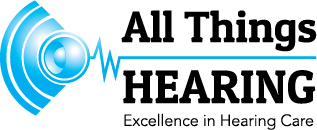Undergoing a comprehensive hearing test begins with recognising symptoms such as frequently asking others to repeat themselves or having difficulty with conversations in noisy environments. Search for local audiologists, check reviews, and book an appointment. Before the test, avoid exposure to loud noises and gather any relevant medical records. The tests may include pure-tone audiometry, speech audiometry, and tympanometry. After the tests are complete, your audiologist will explain the results and recommend next steps, which could include hearing aids or further testing. Stay tuned to learn more about each test and what to expect during this important process.
Recognising Hearing Loss Symptoms
One of the first signs of hearing loss is frequently asking others to repeat themselves. You might find that conversations become challenging, especially in noisy environments. It’s easy to dismiss this as a problem with background noise or the speaker’s volume, but if it happens regularly, it could indicate a hearing issue.
Another symptom to watch for is turning up the volume on your TV or radio higher than others find comfortable. If friends or family comment on the loudness, it’s worth noting. Additionally, you might notice that you’re struggling to follow conversations in group settings. People’s voices can blend together, making it hard to distinguish who is saying what.
Do you experience a ringing or buzzing in your ears, known as tinnitus? This can be another sign of hearing loss. Also, if you find yourself feeling unusually tired or stressed from trying to keep up with conversations, it might be because you’re straining to hear.
Recognising these symptoms early is crucial. The sooner you acknowledge them, the quicker you can seek help. Remember, untreated hearing loss can impact your overall quality of life, so don’t ignore these signs.
Scheduling Your Hearing Test
Booking a hearing test is a straightforward process that can be initiated with a simple phone call or an online appointment request. Start by researching local audiologists or hearing clinics. You can find reviews and recommendations online to ensure you choose a reputable provider. Once you’ve found a clinic, visit their website or give them a call to schedule your test. Many clinics offer online booking options, making it convenient to find a time that fits your schedule.
When you contact the clinic, be prepared to provide some basic information. They may ask about your symptoms, medical history, and any hearing issues you’ve experienced. This helps them tailor the appointment to your specific needs. Some clinics might also have a referral requirement from your primary care physician, so check if that’s necessary before you book.
It’s a good idea to ask the clinic about payment options and whether they accept your insurance. This ensures there are no surprises on the day of your test. Once your appointment is confirmed, mark it on your calendar and set a reminder. Scheduling your hearing test is the first step towards better hearing health.
Preparing for the Appointment
After scheduling your hearing test, it’s essential to prepare properly to ensure the most accurate results. Begin by gathering any necessary medical records, including previous hearing tests and a list of current medications. These details can provide valuable context for the audiologist.
Avoid exposure to loud noises at least 16 hours before your appointment, as it can temporarily affect your hearing and skew the results. If you use hearing aids, bring them along so the audiologist can check their settings and functionality.
Write down any questions or concerns you have about your hearing. This ensures you won’t forget to ask them during the appointment. It’s also helpful to note any specific situations where you experience hearing difficulties, such as in noisy environments or during phone calls.
Lastly, ensure you’re well-rested and relaxed on the day of the test. Fatigue and stress can impact your concentration, potentially affecting the outcomes of the tests. Arriving a few minutes early can give you time to settle in and complete any necessary paperwork without feeling rushed. Taking these steps will help you get the most out of your hearing evaluation.
Types of Hearing Tests
Understanding the different types of hearing tests can help you know what to expect during your appointment. One common test is Pure-Tone Audiometry, where you’ll wear headphones and listen to tones at various pitches and volumes. You’ll raise your hand or press a button whenever you hear a sound. This test helps determine the quietest sounds you can hear at different frequencies.
Another test is Speech Audiometry, which assesses your ability to hear and repeat spoken words. You might hear words through headphones or speakers and be asked to repeat them. This test evaluates not just your hearing ability but also how well you understand speech.
There’s also the Tympanometry test, which examines the health of your middle ear. A device is placed in your ear canal to change air pressure, making your eardrum move. This helps identify issues like fluid in the ear or eardrum perforations.
Lastly, the Otoacoustic Emissions (OAE) test measures sound waves produced in the inner ear. A tiny probe placed in your ear canal emits sounds and records the ear’s response. This test is useful for detecting inner ear issues.
These tests are non-invasive and provide a comprehensive assessment of your hearing health.
Understanding Your Results
After completing your hearing tests, you’ll receive a detailed report outlining your auditory health. This report will include your audiogram, a graph that displays the softest sounds you can hear at various frequencies. Frequencies are measured in Hertz (Hz), and your hearing ability at each frequency is measured in decibels (dB).
Your audiologist will explain the results, highlighting any areas where your hearing deviates from the norm. They’ll discuss terms like ‘hearing threshold,’ which is the quietest sound you can detect. If there’s hearing loss, it will be characterised as mild, moderate, severe, or profound based on the decibel levels.
You might also see terms like ‘sensorineural’ or ‘conductive’ hearing loss. Sensorineural hearing loss involves damage to the inner ear or auditory nerve, while conductive hearing loss is related to problems in the outer or middle ear. Mixed hearing loss is a combination of both.
Your audiologist will also recommend next steps, which could include hearing aids, further testing, or other treatments. Understanding these results is crucial for making informed decisions about your hearing health and taking appropriate action to address any issues identified.



